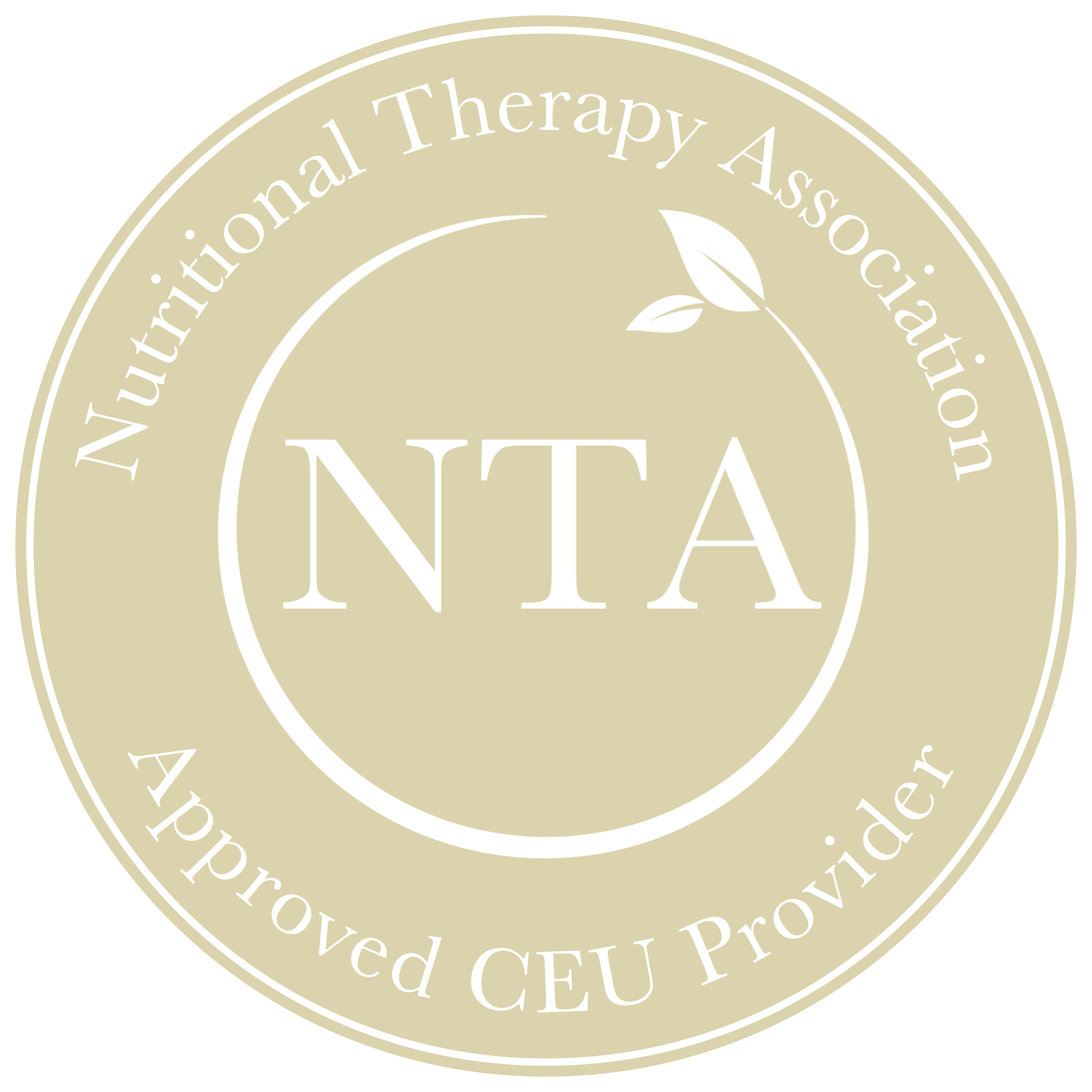Ellen Lovelace, MPH, MRWP, NTP is one of our most senior instructors and leads the curriculum development process for Restorative Wellness Solutions. This blog is based on excerpts from a talk she gave to the Nutritional Therapy Association in the fall of 2022. You can learn more about her at A Balanced Table.
Stress.
If there is a common denominator that unites us all – practitioner and client alike – it’s stress. Every single one of our clients are facing it to some degree, and its negative effects, both psychological and physiological, need to be considered in any healing protocol.
This isn’t a new concept for any of us working in functional health. We’ve long understood that stress, particularly chronic, unabated stress, is extremely debilitating physiologically. But how we understand and support the body’s resilience to stress has evolved significantly.
Hans Selye’s General Adaptation Syndrome
For a long time, any discussion of stress and hormonal health focused strongly on the idea of “adrenal fatigue.” This was based on Hans Selye’s General Adaptation Syndrome, a three-stage process he articulated in the 1930s of how the body reacts and adapts to stress:
In stage 1, he described the typical reactions we think of when exposed to an acute stressor—the “fight or flight” response. Increased heart rate and respiration, as well as the release of adrenaline and cortisol: basically, everything you need to be able to flee in fear.
In stage 2, he described the body beginning to recover from the initial stress response, with heart rate, blood pressure, and cortisol levels starting to rebalance. However, if the stressful inputs continue, he said, the body begins to adapt to a “new normal” where the stress hormones remain elevated long term.
Stage 3 of his model comes as a result of prolonged chronic stress. This is where the body, the brain, the hormones, and the immune system become depleted and exhausted as a result of the nonstop stressful inputs.
While Selye’s model of physiological stress response has merit, we run into trouble when we take this model and apply it directly onto the concept of adrenal function.
In that scenario, the idea is that in stage 1, alarm, the adrenals begin to secrete high amounts of cortisol to prepare the body for flight. In stage 2, the adrenals adapt to this “new normal” of ongoing stress by continually secreting large amounts, until the glands can no longer keep up and the levels start to diminish. And then by stage 3, adrenal fatigue, one is said to enter “adrenal exhaustion”, where the glands can no longer keep up with the demand and are totally tired out, and cortisol levels plummet. This is said to be what leads people to experience symptoms like extreme fatigue, often described as adrenal fatigue.
Unfortunately, this 3-stage concept, ending in low cortisol and exhausted adrenal glands, isn’t consistent with our current scientific understanding of the stress response, nor is it what we always see in clinical practice.
Before we unpack why this model of adrenal fatigue is problematic, let’s make sure we’re all on the same page and do a quick overview of the hormonal cascade involved in the HPA axis and how homeostasis is maintained:
Understanding the chain of command: The Hypothalmic-Pituitary-Adrenal Axis
The hypothalamus, a small area of the brain involved in hormonal regulation, and the pituitary gland, a tiny gland located below the brain, regulate the production of all our hormones, including cortisol in the adrenal glands. When the levels of cortisol in the blood fall, the hypothalamus releases corticotropin-releasing hormone (CRH), which directs the pituitary gland to produce adrenocorticotropic hormone (ACTH). ACTH then stimulates the adrenal glands to produce and release cortisol. The hypothalamus responds to the level of circulating cortisol and, much like a thermostat, decides whether it needs to turn up or turn down the signals to the pituitary.
What we call the “fight or flight response” starts when a stressor is recognized: information is sent to the amygdala, an area of the brain that contributes to emotional processing. The amygdala interprets information, and when it perceives danger, it sends a distress signal to the hypothalamus, the command center of your body.
After the amygdala sends a distress signal, the hypothalamus activates the sympathetic nervous system by sending signals through the autonomic nerves to the adrenal glands. These glands respond by pumping the hormone epinephrine (also known as adrenaline) into the bloodstream. As epinephrine circulates through the body, it makes the heartbeat faster than normal, pushing blood to the muscles and other vital organs. Pulse rate, respiratory rate and blood pressure go up. Epinephrine also triggers the release of glucose and fats from storage sites in the body. And finally, there is a release of cortisol by the adrenals.
The sympathetic nervous system functions like a gas pedal in a car. It triggers the fight-or-flight response just described, providing the body with a burst of energy so that it can respond to perceived dangers. The parasympathetic nervous system acts like a brake. It promotes the “rest and digest” response that calms the body down after the danger has passed.
The HPA axis relies on a series of hormonal signals to keep the sympathetic nervous system activated. If the amygdala in the brain continues to perceive something as dangerous, the hypothalamus continues to release CRH, which travels to the pituitary gland, triggering the release of ACTH, prompting the adrenals to continue to release cortisol. The body thus stays revved up and on high alert.
Over time, the issue becomes that the chronic activation of that stress response wears away at the brain’s ability to respond to changes appropriately and to return hormone levels back to a balanced state.
That wear and tear and loss of metabolic “flexibility” is what leads to changes in cortisol output (sometimes too much, sometimes too little), and disruption of the normal diurnal cortisol rhythm.
It’s the brain, not the adrenals
What all of this means is that it’s not the adrenals, but the hypothalamic–pituitary–adrenal axis (HPA) that is behind the body’s response to stress. The brain is the control center of our stress response; the adrenals are the target, not the drivers of this stress response.
It’s not just an issue of someone having low cortisol due to tired adrenal glands. It’s a dysregulation of our entire stress–response system. A long list of stressors can impact the HP glands and endocrine axes, which will then affect nearly every organ and system of the body, including the gut, brain, thyroid, and male and female sex hormones. (Too much for us to address here – the topic for another blog!)
And so: it’s not the adrenals, but rather it’s the hypothalamic–pituitary–adrenal axis (HPA) that is behind the body’s response to stress. The brain is the control center of our stress response. The adrenals are the end stage, not the drivers.
Changing our clinical approach
Understanding this, how does our clinical approach to supporting our clients experiencing chronic stress change?
When we are supporting the HPA axis overall, our approach is much more holistic and less focused on the adrenals. Our primary order of business is to identify and remove as many of the stressors as possible:
- Dietary stressors, both the obvious ones such as gluten, sugar, and processed foods, as well as hidden food sensitivities contributing to low-lying inflammatory burden
- Impaired gut function, imbalanced microbiome, or opportunistic microbes living in the gut
- Blood sugar dysregulation
- Chronic inflammation
- Toxin exposure, an overburdened liver and poor detoxification capacity
- Nutrient deficiencies
- Lifestyle factors that drive stress such as lack of sleep
Alongside this deeper digging, we encourage our clients to adopt practices to mitigate those stressors that are unavoidable such as regular exercise, time outside, meditation practices, grounding, and other stress reduction strategies.
From a supplementation standpoint, our approach is also different. We’re not trying to drive adrenal function aggressively through the use of glandulars or other highly stimulating supports – we’re looking beyond the adrenals to supporting the full hypothalamus-pituitary-adrenal axis as a whole with supports such as high dose fish oil and adaptogenic herbs, something we talk a lot about in our Mastering the Art & Science of Optimizing Hormones course.
In a nutshell, when we minimize the stressors, good brain function follows. Our job is to identify what is revving up the sympathetic nervous system, keeping the pedal to the metal, and engaging that chronic stress response.
Think you don’t need to know about hormones in your practice? Think again!
At Restorative Wellness Solutions, we talk a lot about the body’s natural healing priorities and supporting gut health is #1 on our list, which is why our program starts with our foundational class, Mastering the Art & Science of Gastrointestinal Healing. But, while gut health is where we always start, proper gut function alone isn’t enough.
No matter what types of clients you serve or what area you specialize in, we can tell you one thing – hormones matter. Yet, so few practitioners have the tools they need to navigate this successfully with their clients. This is why, upon completion of our foundational Gastrointestinal Healing course, you have the opportunity to enroll in Mastering the Art & Science of Optimizing Hormones which teaches you how to test for, interpret, and build customized protocols to support complex hormonal issues. You can learn more about our comprehensive curriculum and apply to start your journey here.







